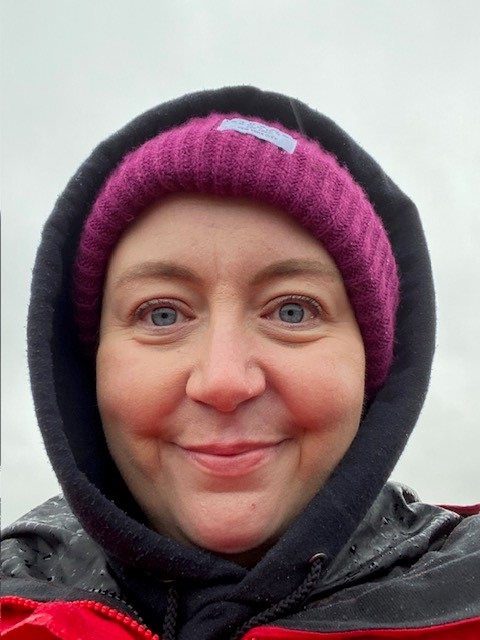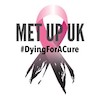
Do you remember what you were wearing on 1 December 2019? Probably not. I do though. I was wearing a blue Valencia Marathon t-shirt, an exhausted but elated perma-grin and a shiny medal round my sweaty neck. That was the last moment I’d ever feel so carefree and invincible. Later that day, I found the lump that would go on to be diagnosed initially as stage two primary breast cancer, and then two months later, the biggie, the dinner party guest nobody wants: stage four metastatic breast cancer with extensive spread throughout my skeleton. At 38. A broken spine, crutches and a less-than-ideal chemo experience were my new reality while the rest of the country slipped into a dystopian covid nightmare.
Fast forward a year to 2021, cancer life had settled down a bit and I could go anything up to a week without bursting into tears. Success! However, in the back of my mind was the nagging thought that HER2+ cancer has an increased risk of spreading to the brain, so I’d always worried that us HER2+ patients aren’t offered brain MRIs as standard along with our other scans. I found myself almost praying for headaches so that I could mention them to my oncologist and get a brain scan to allay my anxieties even just for a few months.
In March 2021, during a particularly enthusiastic dance prompted by a Rudy’s pizza coming out of the oven, I jerked my head in a weird way and was left with headaches and dizziness. “Bingo”, I thought, “one to mention to the oncologist”. I jumped at his offer of a scan and was fully expecting the results to be clear, already thinking ahead to what my next excuse to get a scan would be. Only life went and threw me a curveball in the shape of a tiny 3mm brain met. Hi, new unwanted guest! Targeted brain radiotherapy didn’t sound too awful though, and I remember thinking that maybe it’d even be a blessing in disguise, since it would lead to regular brain scans so I wouldn’t have to worry constantly that there was something growing up there without me knowing.
During the radiotherapy planning stage, my neuro-oncologist queried whether my results had shown areas of leptomeningeal disease (LMD). Devastatingly, after a weekend of almost unbearable anxiety and endless tears, he said this was the case. However, I have to say, even he didn’t sound 100% certain at that point. Nevertheless, he told me that the targeted radiotherapy would no longer be an option and that the only treatment available to me would be whole-brain radiotherapy (WBRT). He said I needed to think carefully about whether to go ahead with it as it may have a catastrophic impact on what would remain of the rest of my life. He seemed to think I’d no longer be able to work, and he didn’t hold out much hope of me carrying on doing things I love, like learning languages. When I dared to ask about my prognosis, he said I had a “reasonable chance” of making it to Christmas that year, but wouldn’t commit to longer. I’ve never felt fear like it. The worst part was telling my dad. I still can’t even bring myself to think about those conversations, they’re just too painful.
I wasn’t even anywhere close to processing the news when I started WBRT a week later. I had 10 sessions over two weeks. Weirdly, I didn’t have many side effects during the WBRT itself. My hair started falling out on day 10 and four days later it had thinned so much that I gave myself a buzzcut to help mentally prepare myself for the inevitable baldness.
The side effects really kicked in a couple of weeks later. It’s been a real mixed bag, including severe headaches and projectile vomiting which I get about a 30-second advance warning of. Over the past two years, I’ve thrown up in some stunning locations, including the Blue Lagoon in Iceland and the Museum of Modern Art in New York City! My memory and language have been a bit impacted, but I can still remember all the words to 90s RnB songs from back in the day (although I might not remember what I’ve gone in the kitchen for!). Probably the weirdest side effect I’ve had is around food. I now can’t stand most food smells, and it’s like the WBRT has taken me back to having the palate of a particularly unadventurous nine-year-old, so I have to work hard to eat anything even slightly resembling a balanced diet.
Shortly after the WBRT I paid to get a second opinion from another trust, who disagreed with my trust’s findings of LMD. “Great!”, I thought; only for my trust to dispute the second opinion. So really, I have no idea whether I actually had LMD, or whether it was all just a misinterpretation of an unclear scan. Who knows…?
I’ve now been around for two years after the catastrophic LMD diagnosis, so I just don’t know what to think anymore. This has probably been one of the hardest bits. To go from thinking I could potentially have years left, only to see it hacked down to a few short months in the blink of an eye, and now, I’m wildly outliving my grim prognosis…it’s enough to make anyone lose their mind. Not to mention the financial implications. How do you try to “live your best life” when you have absolutely no idea how long you’ll need to make your savings stretch for?!
These days, despite the looming spectre of LMD and the after-effects of WBRT, I live relatively well. I still work (albeit part-time), volunteer, exercise, go on holiday, learn Spanish and Italian, and have finished two photography courses. I’ve had great times, and times full of worry and fear for the future. But most of all, I’m just grateful to still be here, despite the limits that were placed on me. For now, I’ll just keep riding this wave of luck and defiance that I seem to be on and carry on living and hoping for the best!
Carole Pollard – METUPUK member and patient advocate.
